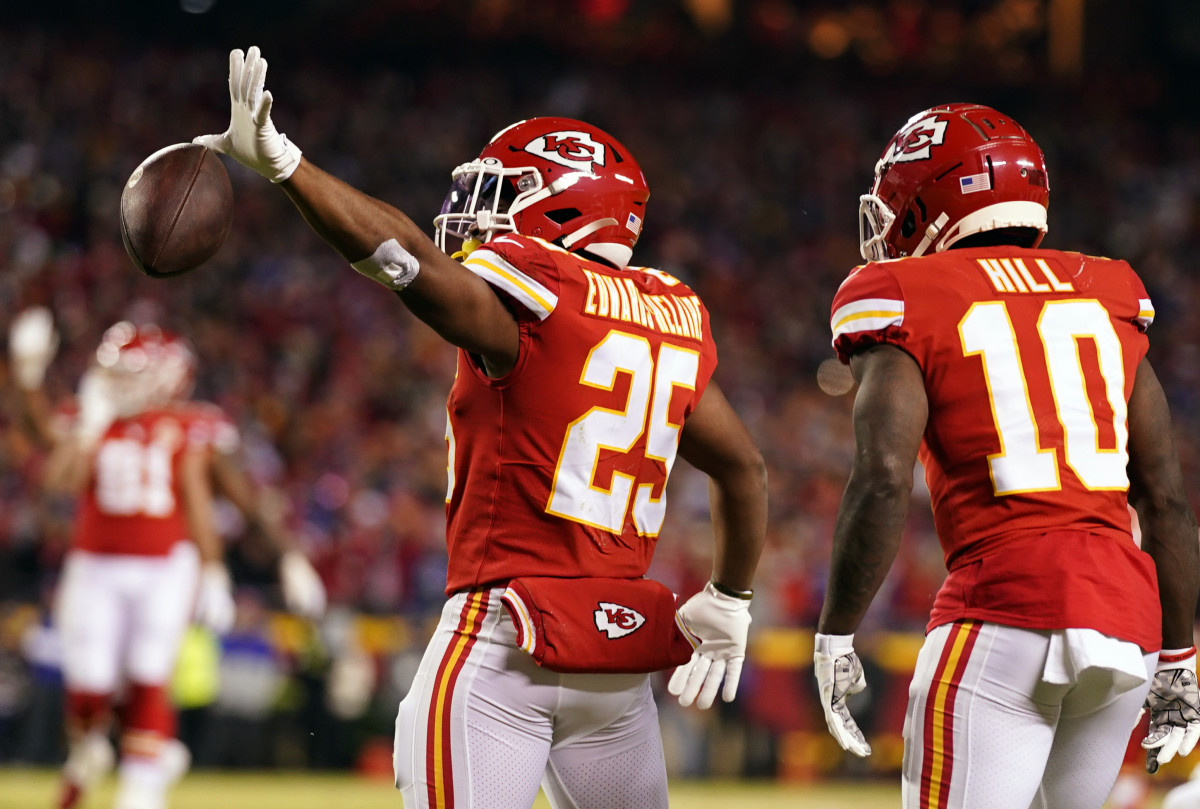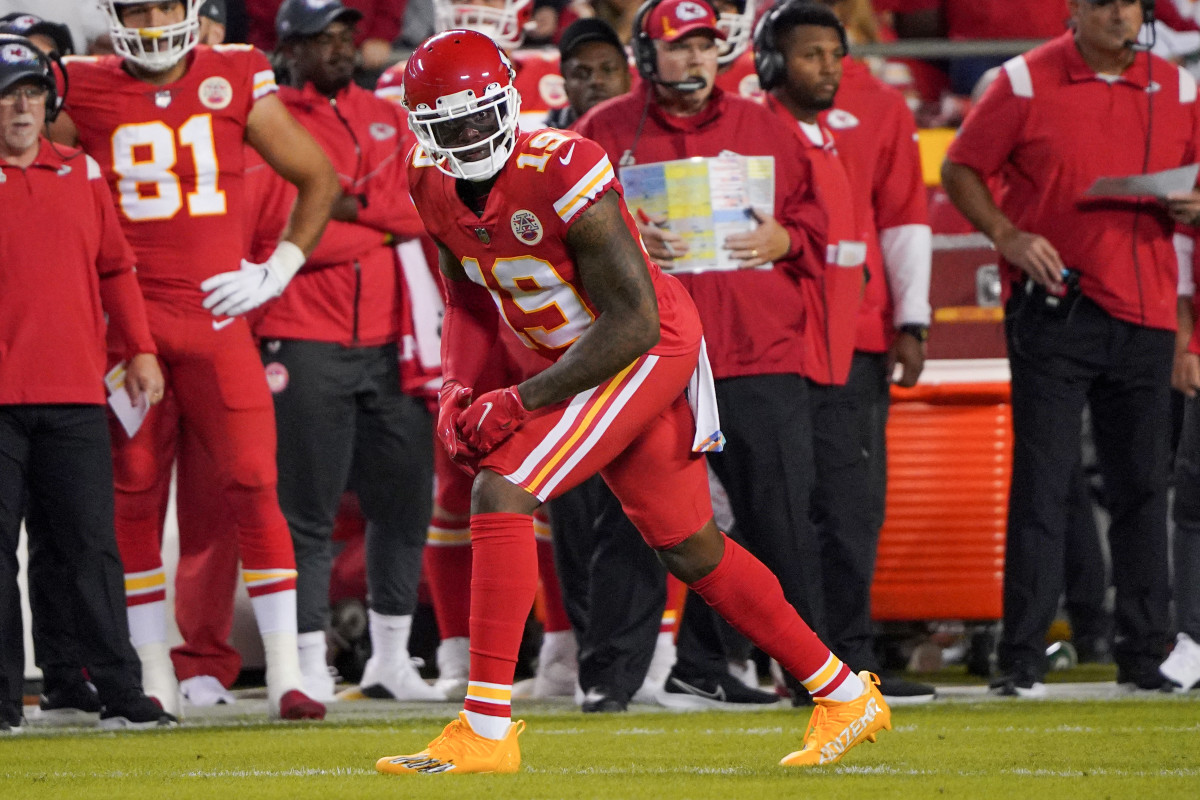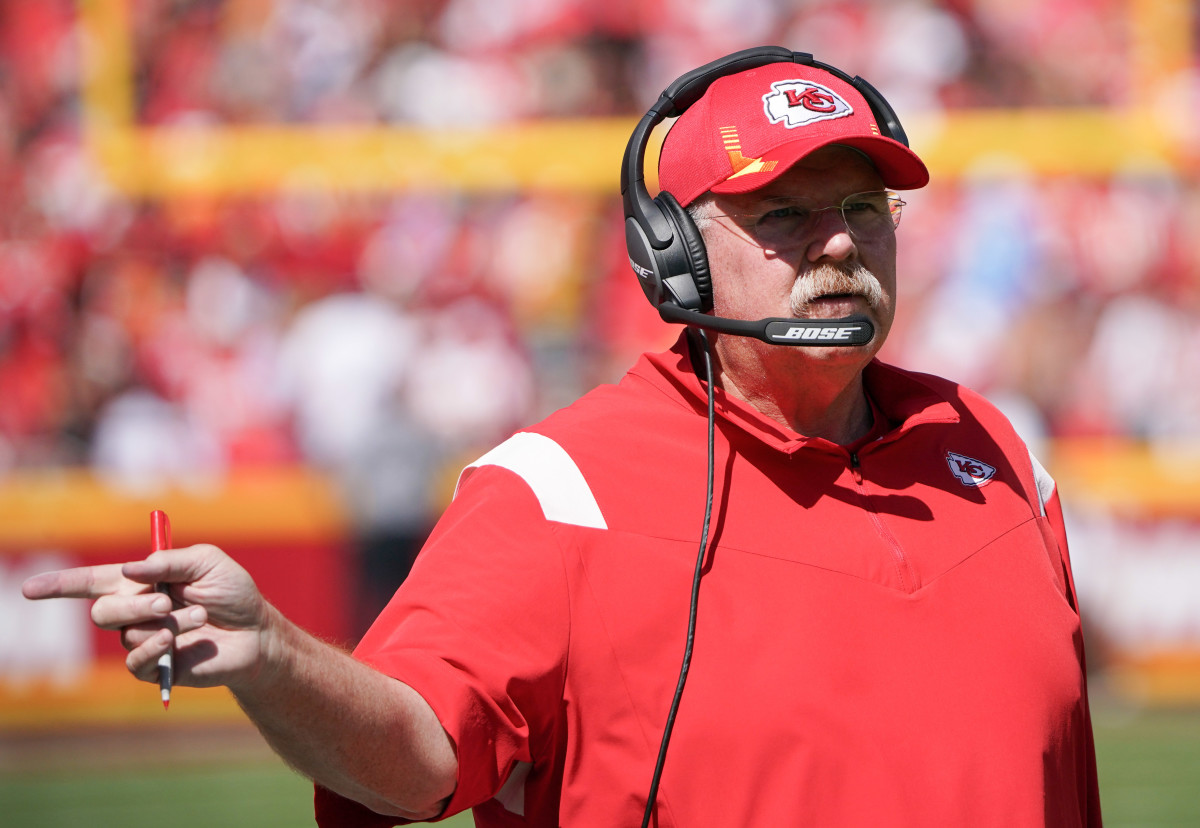How the Chiefs Can Continue to Maximize the Best Years of Patrick Mahomes
Thinking back on the Kansas City Chiefs' 27-24 loss in the AFC Championship Game, there’s one moment that’s been difficult to shake from thought. It had just been confirmed that the Cincinnati Bengals have lost the coin toss, sending the already-raucous Arrowhead Stadium into a frenzy — one of those “By god, that’s, that’s Stone Cold’s music"-type frenzies. The camera pans over to Patrick Mahomes, unflappable as ever as he tosses off his coat, prepared to add to his late-game legend.
In a way, it feels slightly reminiscent of watching the evolution of a younger Aaron Rodgers. The then-28-year-old Packers signal-caller had just wrapped up his fourth full season as a starter, a 14-1 season that some call the greatest individual campaign by a quarterback in NFL history. Anyone with an iota of football intelligence likely had the same thought in 2011: “There’s no way a player with this talent and confidence doesn’t get back to another Super Bowl, let alone win more.”
Here, in 2022, many are still left to wonder.
That isn’t to say the end results with Mahomes will be anything similar. Brett Veach and the Chiefs’ front office have built something special in the trenches to fortify Mahomes; they’ve entrusted him with a future Hall of Famer in Travis Kelce, an on-the-pace one in Tyreek Hill, and an assortment of weapons around them. But in a year in which it felt each of the Chiefs’ preeminent long-term rivals delivered a haymaker or two on the Chiefs, it’s wise to think about how they can be proactive as opposed to reactive. Here are three ideas:
1. Know when to preserve Mahomes’ magic through the run game

With two decades and change worth of coaching experience as evidence, it’s safe to assume that Andy Reid is what he was and always will be in regards to the run game.
In 23 years, Reid-coached teams have finished among the top 10 in rushing attempts per game once in 2002. You weren’t expecting to read the names Duce Staley, Dorsey Levens and Brian Westbrook today, yet here you are — and even when his teams led the entire NFL in yards per carry (2010), they still ran the ball at the 12th most frequent rate (per Football-Reference). In Kansas City, they’ve trended towards one of the NFL’s lowest rates, topping out at No. 12 in 2015 with the Charcandrick West, Jamaal Charles, Spencer Ware three-headed monster.
That’s no indictment on Reid, one of the NFL’s greatest coaches, especially not now with the Grim Reaper under center. And to his credit, his teams almost always boast an elite spot in rushing touchdowns and yards per attempt. But when looking at the reasons this year’s team fumbled away a win in the AFC Championship Game, it had nothing to do with actual fumbles. The Chiefs passed, passed, and passed some more, even when they were ahead of schedule in the down-and-distance department and Cincinnati’s defense settled into a “please run the ball on us” coverage.
There’s also the element of “I told you so” that the Chiefs could’ve flaunted. In 2003, Reid noted that he didn’t believe in taking running backs in the NFL Draft’s first round, only to do it 17 years later in a pass-heavy league. Clyde Edwards-Helaire looked poised to justify that decision and then some in the 27-24 loss.
Instead, the shiny new car sat in the garage, seldom driven. With a chance to work the clock, Kansas City had a 9-to-5 pass-to-run ratio up 18 in the third quarter. The end thought: there are few situations Mahomes can’t bail you out of. But his teammates are good and capable, too. With both Jerick McKinnon and Darrel Williams on the unrestricted free agent market, it should be intriguing to see how that plays out.
2. Invest in a jump ball specialist

It’s telling that in an offseason in which the Chiefs have question marks at almost every defensive level, some still suggest that they’re better off utilizing draft capital on a wideout. Jordan Foote of Arrowhead Report outlined a few that could be capable of accounting for Sammy Watkins’ departure, and USA Today’s The Draft Wire predicted Kansas City would go with a heavy-hitter in Ohio State standout Chris Olave.
For this article's premise, it makes sense. The best way to maximize Mahomes’s peak years is to continually sprinkle in weapons. In theory, it could have a hidden effect in lessening superstar receivers Tyreek Hill and Travis Kelce’s target share, and thus extending their careers. Games like their Week 15 matchup against the Los Angeles Chargers — where the two of them combined for 22 of Mahomes’s 31 completions, 339 of his 410 yards, all three of his touchdowns and 26 targets — showcase their superhuman powers. But there were times last season where they appeared more mortal than usual. Taking pressure off of them could be key.
Then, there’s the argument from an X’s and O’s standpoint. The Chiefs, namely Hill, were successful in pivoting from being a big-play, quick-score machine to becoming more methodical and steady. With that said, recall the very reason that a player like Josh Gordon was brought along: to win those contested catches. With respect for Gordon, his furthest catch went for 11 yards.
This year’s free agency crop is filled with players capable of showcasing an elite catch radius in those 1-on-1 situations. Allen Robinson has long been a personal favorite, and it makes sense, considering the longstanding ties between the Chicago Bears and Chiefs. To name off the list of quarterbacks who’ve thrown Robinson the ball: Blake Bortles, Mitchell Trubisky, Nick Foles, Andy Dalton, and Justin Fields. Needless to say, Robinson won’t need an incentive to finally play with an All-Pro signal-caller. He led the NFL in contested catches from 2019 to 2021 (47 receptions).
There are cheaper options as well, should Robinson want more money than the Chiefs' budget allows. Veach went as far as to name Odell Beckham Jr. during his end-of-season presser. JuJu Smith-Schuster remains a player on the radar. One name that hasn’t been mentioned as much is DJ Chark Jr., a 6-foot-4, versatile receiver likely anxious to redeem himself after his ankle fracture last September.
Despite running a more conservative offense, the deep, 50-50 ball remains a tenet in the Chiefs' offense. Mahomes ranked among the top-10 in completions of 10-plus, 20-plus, 30-plus, 40-plus and 50-plus yards. Just as notable, he ranked fifth in passes dropped by receivers (31). Similar to the running back position, the receiver depth chart could be in flux with Byron Pringle and Demarcus Robinson set to become free agents.
3. Be proactive in adjusting to defenses

The NFL, by nature, is a copycat league. Doing something well is running the risk of having that same strategy used against you by a different team. The AFC Championship Game chalked up 47.9 million viewers worldwide, and it's safe to bet that defensive coordinators and coaches across the league occupied a small portion of that. This means they likely took note of the Bengals’ unorthodox strategy in mounting their 18-point comeback: the drop-eight coverage.
According to the NFL’s Next Gen Statistics, Mahomes saw coverages with at least eight defenders on more than a third of his dropbacks, leading to a career-low pass Expected Points Added of -14.4. Perhaps most ironically, Cincy’s three-man rush yielded four sacks, dropping into the Chiefs’ go-to crossing routes with a hole defender, as well as bottling up deep routes.
The #Bengals dropped 8+ defenders in coverage on a season-high 35% of pass plays.
— Next Gen Stats (@NextGenStats) January 30, 2022
Patrick Mahomes struggled against 8+ defenders in coverage, completing just 7 of 13 passes for 59 yards & an INT with 2 sacks (-14.4 pass EPA, career-low).#CINvsKC | #RuleTheJungle pic.twitter.com/oGWhaVWx6z
Some are already theorizing that more teams could look to that college-style defense to offset Kansas City’s high-octane offense. It feels painfully similar to the phrase Chiefs fans had been forced to endure hearing all season long: two-high safeties. After the Tampa Bay Buccaneers showcased it in Super Bowl LV, every team the following year used it as a blueprint.
It’ll be intriguing to see both how often teams use it on the Chiefs next season and how they respond. The Bengals used it at a season-high rate, which likely speaks to both their desperation and willingness to adapt on the fly. It isn’t the first time teams have had success with it against Kansas City, and as Oliver Connolly of The Read Optional noted, it’s difficult to prepare for since offensive play designs are primarily designed to attack six or seven, not eight. It reinforces idea No. 1: run the ball and punish that conservativeness. But can a team be fully trustworthy in something the league hasn't quite yet seen?
Among other ways the Chiefs can be proactive is to finalize a long-term deal with Orlando Brown Jr., and shore up on the other side of the ball. It sounds self-explanatory, but Kansas City doesn't want old problems popping back up. The offense shouldn't feel like it needs to score 40 to win, nor should the line fail to jell until late in the year. Thinking about generational talents like Rodgers, Drew Brees or Russell Wilson, these can be attributed as reasons why they didn’t win or haven't yet won more than one title.
As a result, they’ve either lived or are living a fate Mahomes will be hoping to avoid: having their primes atrophied with only a trophy to show for it.
